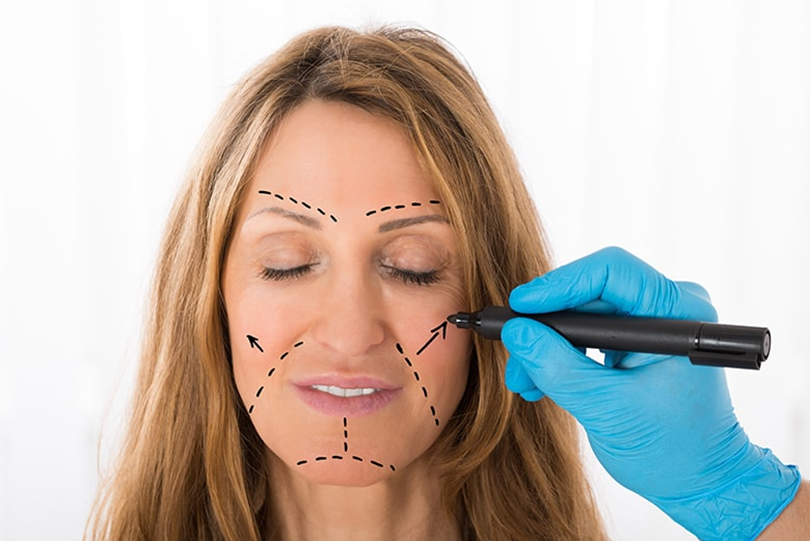A facelift, known clinically as rhytidectomy, is a cosmetic surgical procedure to improve visible signs of aging in the face and neck. As becoming older, our skin begins to be less elastic, and facial tissues lose volume. Eventually, this leads to “jowls” on the lower face, deep wrinkles, and loose skin on the neck. While it is a natural part of aging process, facelift surgery may be a good solution for patients who feel worried about these skin problems. Like any surgically invasive procedure, you need to spend some downtime to recover and heal, and there is always a risk of abnormal scars. Fortunately, these scars might be minimized and treated with a clinically-proven solution.
Read on to learn more about facelift procedure, recovery and discovering an effective solution for post-operative car management.
What is facelift surgery?
The American Board of Cosmetic Surgery (ABCS) states that “facelift surgery lifts and firms sagging facial tissues to restore a more naturally youthful facial appearance”. It is often said that having a facelift works to “turn back the clock,” helping a patient look like a younger version of him or herself. By removing excess, sagging skin, smoothing deep folds, and lifting and tightening the deep facial tissues, a facelift surgery can help a patient look not just younger, but simply “better.”
Facelift surgery is done indivisually to each patient’s need, and cosmetic surgeons will adjust their techniques accordingly. According to ABCS, facelift procedure includes two types: standard facelift and mini facelift. As per standard facelift, also known as a traditional facelift, this procedure deals with moderate to advanced aging areas in the face and neck affected by age. Mini facelift, meanwhile, addresses a mild degree of jowling and sagging skin.
Recovery and post-operative scar management
The American Board of Cosmetic Surgery (ABCS) indicates that facelift is a complex procedure requiring exceptional surgical skill, but the recovery process is surprisingly quick for most patients. It typically takes about 2 weeks so that patients can come back to normacy of daily activities following a standard facelift, and this period is usually even shorter after a mini facelift.
After a facelift, normally, bruising and swelling appear, and will be at their peak about 2 days after surgery. After that, bruising and swelling will gradually get better, and might be unnoticeable after about 10 to 14 days. Especially, it’s important to keep your face protected from the sun after surgery to help heal scars as smoothly as possible.
To address post-operative scarring such as keloids and hypertropic scars, topical silicone gel should be applied. Silicone gel technology is a clinically-proven treatment option for reducing the abnormal scars with over 30 years of evidence to support its safety and effectivenes. Silicone gel is recommended as the first-line topical scar treatment option by physicians, surgeons, and scar management experts. Silicone gel increases hydration of stratum corneum and thereby facilitates regulation of fibroblast production and reduction in collagen production, which results into softer and flatter scar. It allows skin to “breathe”. Additionally, silicone gel protects the scarred tissue from bacterial invasion and prevents bacteria-induced excessive collagen production in the scar tissue.
DTP Medical supplies the high quality silicone-based scar products such as Nourisil™ MD, Bapscarcare Gel, Bapscarcare Sheet. Ask your doctor which therapy option is right for you.
You don’t have to live with your unwanted scars. Try silicone-based scar products supplied by us today and see the difference!

